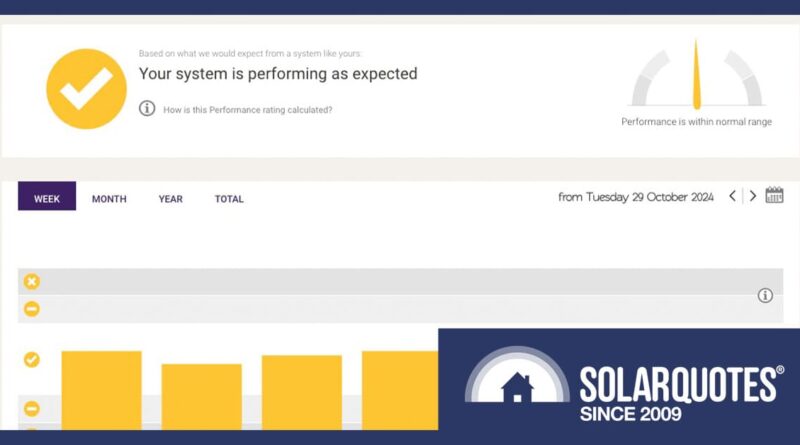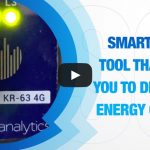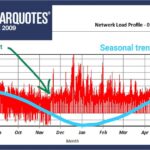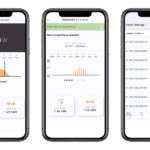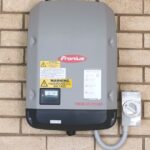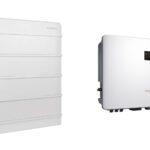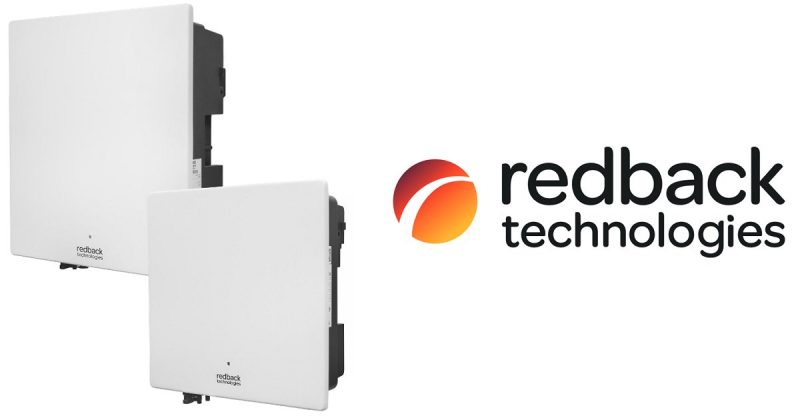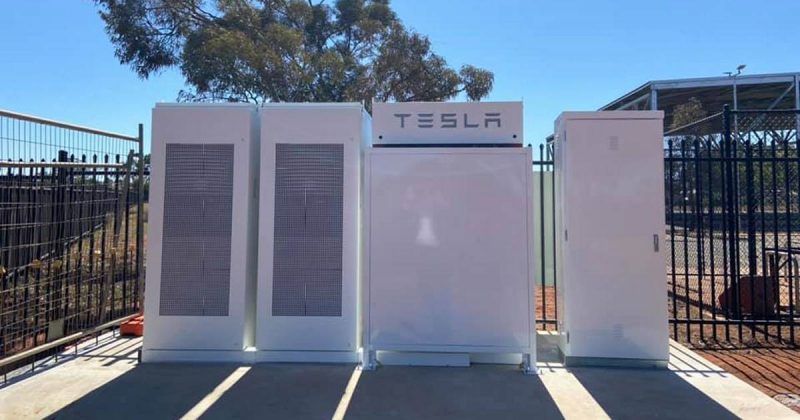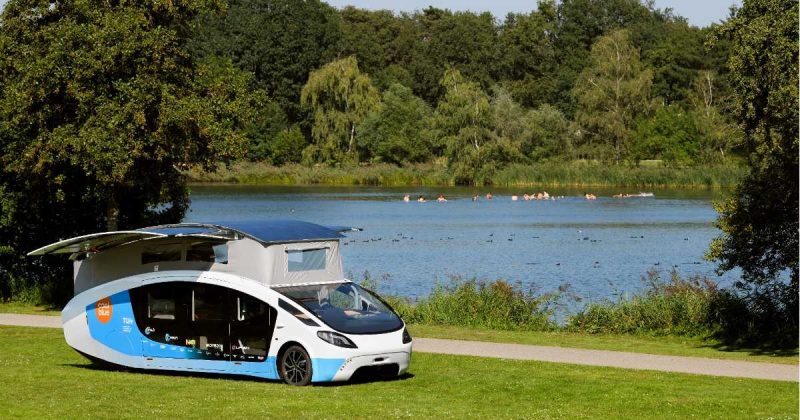Don’t Ignore Your Solar: Maintaining Monitoring Makes Sense
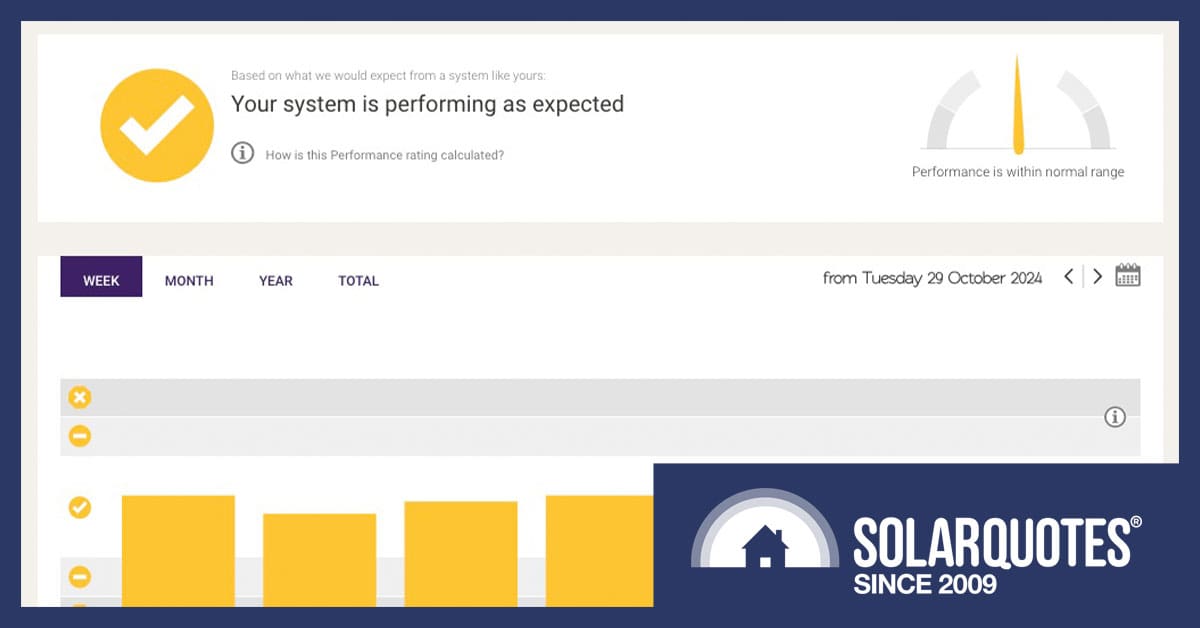
Is your system performance within normal range? Without good monitoring, you’ll never know.
As an installer, there’s one thing I have always tried to explain to customers. You need to keep an eye on your solar. It’s not just about economics but a legal obligation in many cases. Read on while I explain why monitoring is important, how to get it, and how to keep it working.
When solar was $12,000 per kilowatt, having your inverter out of sight and out of mind risked surprise bills and angry customers if something went wrong. The first inverter I owned had just 4 red lights and an LCD counter, but it’s checked regularly and still works 14+ years later.
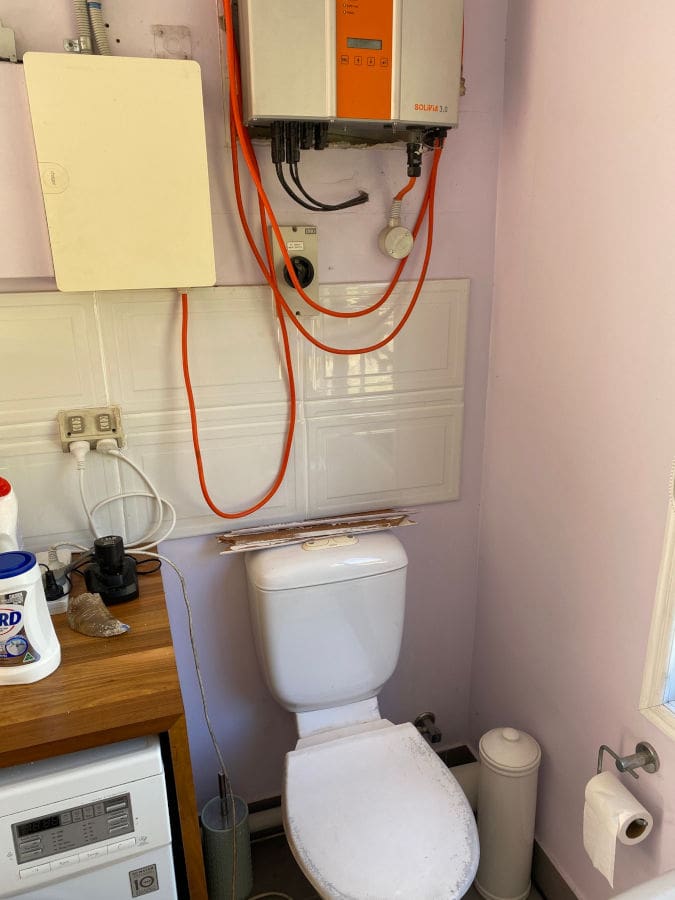
Don’t laugh, this inverter gets monitored every day. image credit Crap Solar – Mladen Simunovic
Monitoring Is Standard Now
A monitored solar system is a safer solar system. Offers of “free WiFi” when buying solar should be viewed the same way as a dealer offering free seatbelts with every new car. Few customers realise they’re legally obliged to have an earth fault alarm. The idea is that potentially dangerous earthing issues can be investigated promptly. Alerts via email are allowed, so don’t ignore those emails from Mr Fronius, Mr Sungrow, or their friends.
But monitoring is about more than early detection of safety-critical faults; it can also detect harm to your wallet by recording long-term trends. When buying solar, your quote must include a yearly yield estimate broken into 12 months. If the system doesn’t do what it says on the tin, you need records to make a warranty claim, but the lynchpin is having a consistent internet connection.
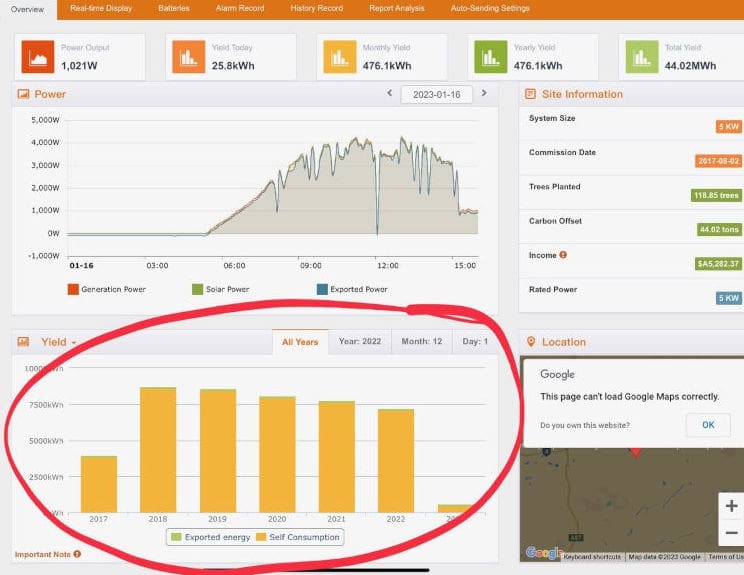
Having yearly totals can vividly display excessive degradation in output. This slope looks like more than 1% loss per year to me.
Wi-Fi Woes
While an inverter wifi connection can be quick and easy on installation day, wireless internet can be anything but. Without the internet, modern inverters can’t even be commissioned. I would carry a spare phone for a hotspot and WiFi network extender in my ute because sometimes you just can’t hold your tongue right. Even if we had to gift an extender to a customer, $100 for hardware saved face and a return visit.
Things get worse when somebody decides to change telcos, change router or move things around the house. Once the Netflix is working, nobody notices a lack of solar monitoring. However once excessive bills start rolling in, the story can get awkward for whoever unplugged the network extender in the garage.
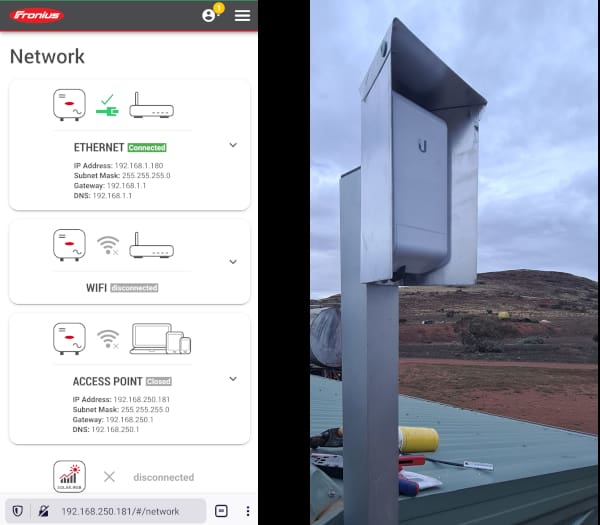
This is a Ubiqt bridge. It is a fair dinkum WiFi extender good for 100+ metres of line of sight, with a custom-made shroud to keep the weather off it.
Dedicated Networks Help
Generally, when customers update their internet hardware, anything physically plugged in will be reconnected. That’s why I always encourage people to hardwire a LAN cable straight to the solar inverter, but it’s impossible for some things, like a Fronius Wattpilot EV charger.
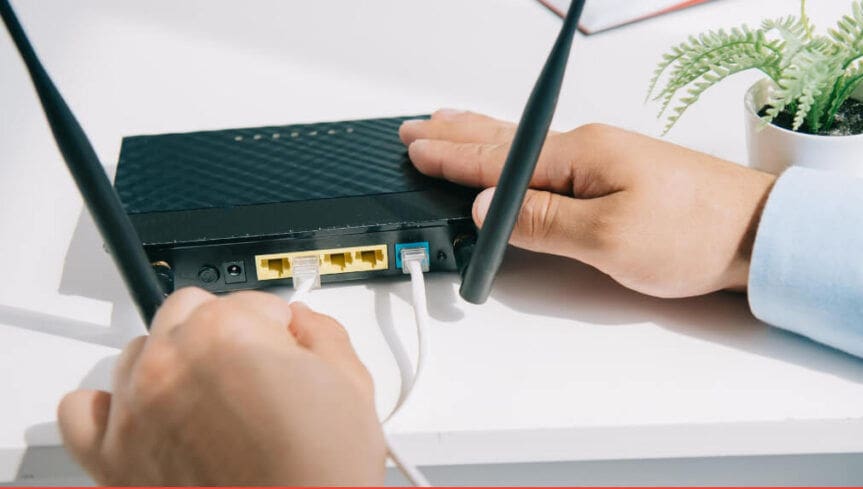
Hard-wired connections are the best.
Savvy installers use a dedicated Wi-Fi router to create a secure network for energy management hardware. This ensures a new NBN deal or visiting relative doesn’t inadvertently disable anything. One piece of hardware is cheaper than a call-out to recommission your inverter connection, pool heat pump, hot water service, EV charger etc, etc.
As we’ve written before, reliable internet will be essential for the security of the whole electricity grid.
Buying A House With Existing Solar?
Real estate agents struggle to give you the right keys when you buy a house, so getting WiFi access, account transfers, logins, and passwords is nearly impossible.
The best approach is direct contact with the old owners. Have them nominate you as a new owner, change your email address, and reset passwords. Companies like Tesla favour this DIY approach because it doesn’t require their phone support; however, some require a new account set up via official channels.
Don’t Rely On Your Solar Retailer To Raise Problems
When solar is installed, you get an app, and your retailer gets remote access, too. This is a blessing for diagnosing problems. It saves trade appointments and gives you evidence for network faults and failures that could become insurance claims. But don’t let the salesperson fool you. Nobody’s in the office checking on how your system is working every Monday.
The best monitoring is automated, like Solar Analytics, which uses algorithm smarts combined with local averages to predict output and raise an alarm if it’s off kilter. It’s very clever stuff, and I know firsthand they can even identify a heat pump hot water service running at night.
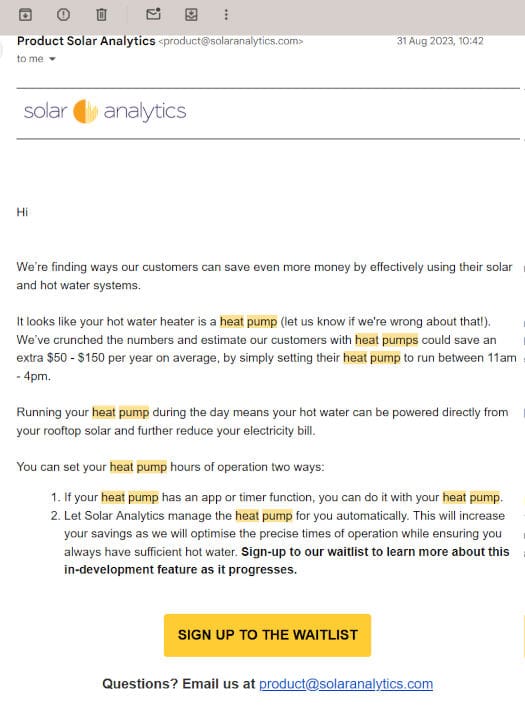
When running, different devices have different signatures of voltage, current, and power factor. SolarAnalytics can identify them, and CatchControl lets you automate them.
When Your Retailer Goes Bust
Sadly, thousands of solar retailers have disappeared. Even Solar Depot pulled the pin after 20 years solarcoasting, so there’s another 1000+ Fronius systems that are now effectively homeless. Ringing Fronius and releasing your system from a former owner or defunct installer is perfectly straightforward in my experience.
Not All Systems Are Easy
I have to call out Enphase here. Not only do they reportedly run a walled garden by charging US$10/month for API access,1 but charging a hefty fee to give a new homeowner access to their own monitoring is ludicrous. The process is detailed by clicking here.
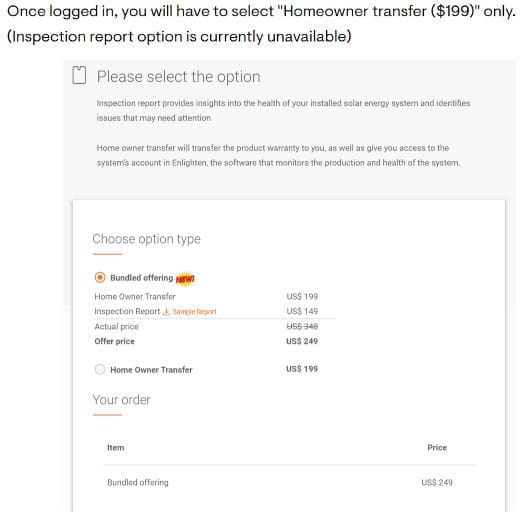
At 65 cents exchange rate, Enphase have their hand out for $306 Australian dollarydoos
Changing solar retailers with Enphase is a DIY process, at least. Steps are as follows:
Menu > Account > My Access Control > Below “existing companies,” add the email address of who you would like to give access to, and then use the drop-down menu to change the PV maintainer.
To be honest, I’ve never had to set up an Enphase Enlighten account, but a customer told me a horror story about a tenant who didn’t monitor it while the house was rented for a couple of years. Without internet, he told me the Envoy was bricked, and the warranty was put at risk.
Enphase does have redeeming features.
Just because the Gateway/Envoy is offline doesn’t mean the system stops producing. The Enphase battery controller has a built-in backup 4g dongle, which is a great idea. Though it can’t be used for commissioning, factory-installed redundancy is brilliant.
Enphase is a massive, well-resourced company, so they tell me a whole project team works on reconnecting offline IQ Gateways, but the response rates are reportedly low.
On Commercial Solar, Monitoring Can Save Thousands Every Year
This image shows a poorly maintained 100kW system. One 27kW inverter working. An intermittent earth fault is causing #2 inverter to cut out most of the time and #3 is just dead. These faults will cost thousands over the course of a year.
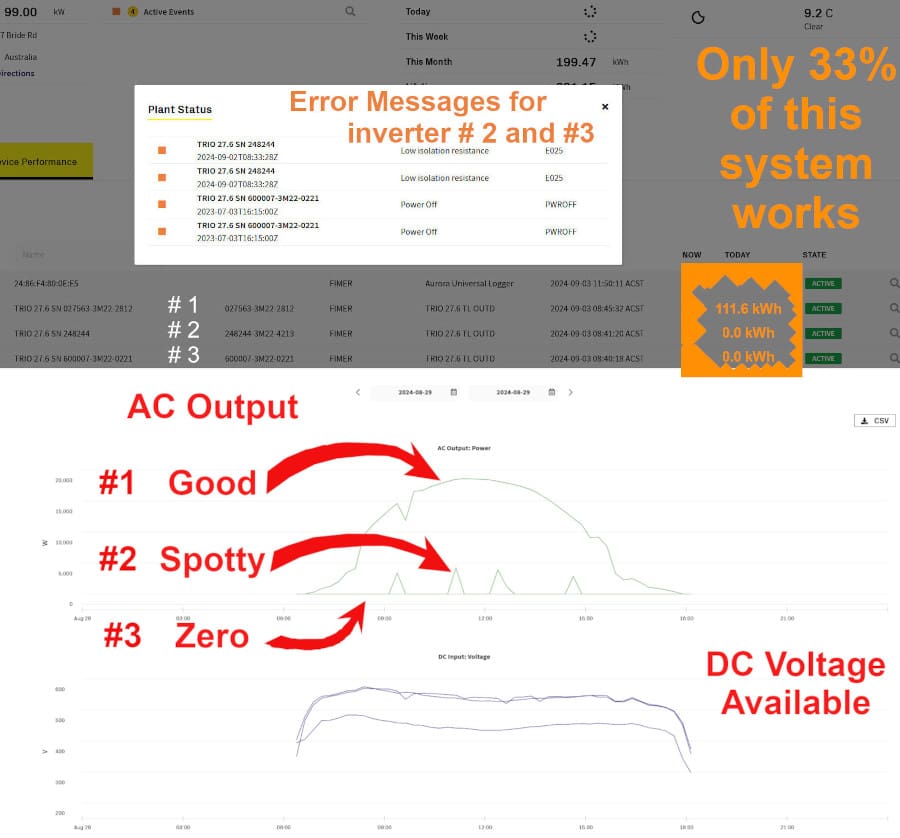
The Fimer Aurora monitoring platform seems to have gone backwards, with tiny text and no contrasting colours I have to highlight numbers to explain.
Knowledge Is Power
Even old systems can benefit from a standalone monitor. By adding CatchControl, which comes with free Solar Analytics, you’ll make electricity visible, which can drive the cheapest form of bill control, behaviour change and efficiency.
Not all monitoring apps are intuitive to use, and not everyone is energy savvy. If your monitoring is nonexistent, was never set up, is on the blink, or is just unintelligible, then it’s worth getting an expert to examine it.
Footnotes
- Application Programming Interface is the language computers use to talk to each other, essential for marrying up different components for intelligent power management ↩
Original Source: https://www.solarquotes.com.au/blog/dont-ignore-solar-monitoring/

